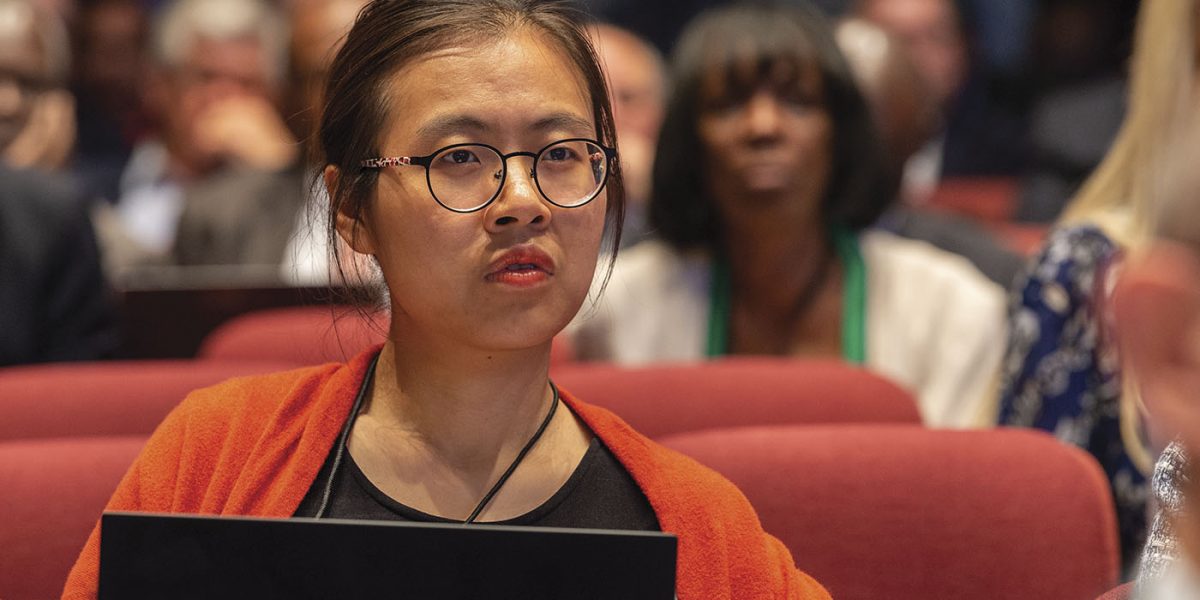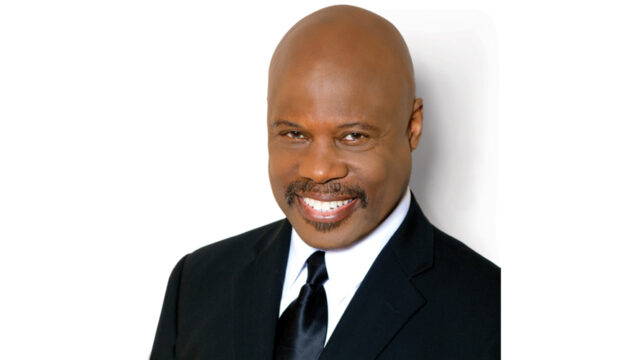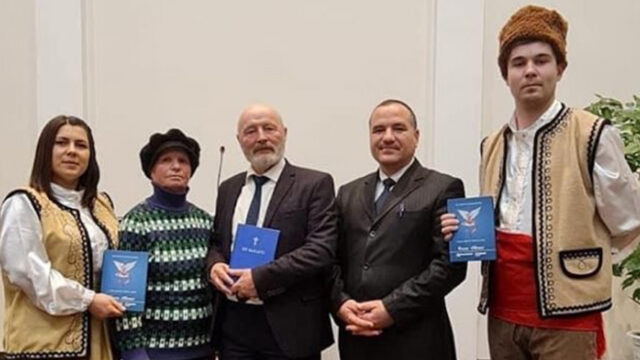Amended statement is passed by majority vote

Members of the Seventh-day Adventist Church’s top decision-making body deliberated over a period of two days this week about a proposed Statement on the Biblical View of Unborn Life and Its Impli
Members of the Seventh-day Adventist Church’s top decision-making body deliberated over a period of two days during the 2019 Annual Council about a proposed Statement on the Biblical View of Unborn Life and Its Implications for Abortion. The document emerged in September from a longer period of study and discussion among Adventist theologians, medical experts, healthcare administrators, ethicists and Church administrators.
A previous article outlined the process followed by various committees and administrative units in developing the draft. A working group of 26 individuals, including seven women, was commissioned by the General Conference Administrative Committee (ADCOM) in September to “prepare a draft of one unified statement that will clearly be based on biblical principles that underline the sanctity of life and recognize the exceptionally difficult cases/anomalies women can face,” according to the voted Terms of Reference.
A Specific Kind of Document
Church leaders were emphatic that the document considered and ultimately voted this week is a Statement, and not a set of guidelines for either individuals or church organizations. As defined by church practice, a voted Statement outlines the Seventh-day Adventist Church’s official position on a specific matter, while Guidelines offer direction for practical application on a specific subject.
No previous statement about the sanctity of unborn life had been developed before this week’s document. The last time the denomination issued Guidelines on abortion was in 1992. According to Adventist world church president Ted N. C. Wilson, however, the 1992 Guidelines contained “a far more limited approach in terms of a comprehensive view of the Biblical approach to this precious subject.”
Wilson went on to clarify the role of a voted Statement in the life of the 21-million-member church. “This is a Statement. It is not part of the Church Manual. It is not intended to be a Statement [by] which church boards and members will judge other people.” Addressing church leaders directly, he added, “Please instruct and encourage our church members not to do that. It is a biblical statement to inform not only the world but ourselves how the Bible speaks to us about life.”
Introductory Comments
“As you know, [the topic of the sanctity of unborn life] is a very sensitive issue, but at the same time we have been privileged to study it,” said Artur Stele, the church vice president who chaired the writing committee and oversaw the process of drafting the Statement.
Stele outlined the process of developing the proposed document, a sequence that began with the Biblical Research Institute (BRI) Ethics Committee and expanded to include the GC Bioethics Committee, the 26-member working group, representatives of various Adventist healthcare systems, and several GC administrative committees. The process resulted in a total of 27 versions of the draft, Stele noted.
Peter Landless, a physician who serves as the director of Health Ministries for the world church, addressed the fear that the Statement is “a nuclear weapon against the Adventist healthcare systems,” clarifying that “the answer is ‘no.’” During his presentation, Landless also displayed a chart showing that the total number of abortions performed by Adventist health care institutions during the past year. The statistics reveal that the number is very small, almost all of them relating to dramatic fetal abnormalities which would make life outside the womb impossible.
While acknowledging that “we do not have a wonderful history in our health institutions” regarding abortion, Landless reported a dramatic decrease in abortions since the 1992 Guidelines were voted. “It should be clearly stated: the aim is to approach as close to zero abortions as is safely possible.”
Stele asked BRI director Elias Brasil de Souza about the significance of the abortion statement not being included in the Church Manual. “It was not prepared to be incorporated into the Church Manual or even into the Fundamental Beliefs,” said de Souza. “But this document is guidance for the church to tell its members, to tell the world, where we stand on this important issue.”
De Souza also emphasized how church members are encouraged to relate to the Statement.
“We should not use this document as a weapon to push people away,” he said. “We should not use it to punish people. It’s a redemptive document. As you read the document carefully, you will see it is gracious and recognizes the difficult situations people sometimes are found in. In this document there is an appeal for us to be compassionate.”
Stele clarified that more practical protocols and processes would be developed, a process that will initially be led by the world church’s Health Ministry leaders, but will go on to include the development of guidelines for pastors and congregations. “We will work assiduously and very carefully with bio-ethics individuals and hospital institutions,” said Landless. “We must, at least by the new year, start coming out with meaningful processes and protocols that will be useful to those who work at the cold face of health management.”
Discussion On the Floor
Discuss on the floor reflected the diversity of perspectives on the topic.
Doug Batchelor, speaker and director for Amazing Facts Ministries, an independent supporting ministry located in North America, was the first to speak in favor of the Statement. “I praise God because the church is addressing this issue; I wish we would have done it sooner. The Bible teaches that human life is a miracle, a gift of God’s creation and begins at conception.” Batchelor concluded, “Having a clear Biblical statement on abortion does not mean that we are going to attack people who disagree.”
Richard Hart, president of Loma Linda University Health, a medical system operated by the church-owned Loma Linda University, said “I appreciate the document for the value it gives to the sanctity of life.” Hart, a physician, clarified that Loma Linda does not offer elective abortions, and went on to describe several critical medical conditions where termination of pregnancy may be necessary. He stressed the importance of wording that would “allow the doctor and the mother to make the wisest decisions” in those difficult circumstances.
Other delegates brought to the floor concerns regarding the omission of language addressing the experiences of rape and incest, which were both referenced in the 1992 Guidelines.
Jiri Moskala, dean of the Seventh-day Adventist Theological Seminary at Andrews University, while praising the document for its respect for life, and biblical principles, also offered suggestions for improvement. “This Statement is strangely silent about the most painful issue in regards to abortion, namely rape. I hope we will not send a false signal to our churches by omitting in this document the problem of violence and rape. I think rape should be included.”
“I really like the fact that this is so centered in the Bible,” said Kathy Proffitt, a delegate from North America who spoke in favor of the document. “Jeremiah 1:5 was mentioned, before I formed you in your mother’s womb,” reminded Proffitt referencing the draft Statement. “God intentionally owns and forms each infant.”
The Vote
After the Monday discussion on the Annual Council floor ended for the day, Thomas Lemon, general vice-president and chair of the discussion, thanked the group for their openness and candor. Delegates agreed by consensus to continue the discussion on Wednesday morning, after a writing committee had the time to incorporate some of the comments and editorial changes into the Statement.
Just before noon on Wednesday, Stele read through the changes made to the document based on the input and suggestions by the delegates. The Statement on the Biblical View of Unborn Life and Its Implications for Abortion was approved by a vast majority of the delegates, with only a few voting “no” because of concerns about specific language.
ch administrators.
A previous article outlined the process followed by various committees and administrative units in developing the draft. A working group of 26 individuals, including seven women, was commissioned by the General Conference Administrative Committee (ADCOM) in September to “prepare a draft of one unified statement that will clearly be based on biblical principles that underline the sanctity of life and recognize the exceptionally difficult cases/anomalies women can face,” according to the voted Terms of Reference.
A Specific Kind of Document
Church leaders were emphatic that the document considered and ultimately voted this week is a Statement, and not a set of guidelines for either individuals or church organizations. As defined by church practice, a voted Statement outlines the Seventh-day Adventist Church’s official position on a specific matter, while Guidelines offer direction for practical application on a specific subject.
No previous statement about the sanctity of unborn life had been developed before this week’s document. The last time the denomination issued Guidelines on abortion was in 1992. According to Adventist world church president Ted N. C. Wilson, however, the 1992 Guidelines contained “a far more limited approach in terms of a comprehensive view of the Biblical approach to this precious subject.”
Wilson went on to clarify the role of a voted Statement in the life of the 21-million-member church. “This is a Statement. It is not part of the Church Manual. It is not intended to be a Statement [by] which church boards and members will judge other people.” Addressing church leaders directly, he added, “Please instruct and encourage our church members not to do that. It is a biblical statement to inform not only the world but ourselves how the Bible speaks to us about life.”
Introductory Comments
“As you know, [the topic of the sanctity of unborn life] is a very sensitive issue, but at the same time we have been privileged to study it,” said Artur Stele, the church vice president who chaired the writing committee and oversaw the process of drafting the Statement.
Stele outlined the process of developing the proposed document, a sequence that began with the Biblical Research Institute (BRI) Ethics Committee and expanded to include the GC Bioethics Committee, the 26-member working group, representatives of various Adventist healthcare systems, and several GC administrative committees. The process resulted in a total of 27 versions of the draft, Stele noted.
Peter Landless, a physician who serves as the director of Health Ministries for the world church, addressed the fear that the Statement is “a nuclear weapon against the Adventist healthcare systems,” clarifying that “the answer is ‘no.’” During his presentation, Landless also displayed a chart showing that the total number of abortions performed by Adventist health care institutions during the past year. The statistics reveal that the number is very small, almost all of them relating to dramatic fetal abnormalities which would make life outside the womb impossible.
While acknowledging that “we do not have a wonderful history in our health institutions” regarding abortion, Landless reported a dramatic decrease in abortions since the 1992 Guidelines were voted. “It should be clearly stated: the aim is to approach as close to zero abortions as is safely possible.”
Stele asked BRI director Elias Brasil de Souza about the significance of the abortion statement not being included in the Church Manual. “It was not prepared to be incorporated into the Church Manual or even into the Fundamental Beliefs,” said de Souza. “But this document is guidance for the church to tell its members, to tell the world, where we stand on this important issue.”
De Souza also emphasized how church members are encouraged to relate to the Statement.
“We should not use this document as a weapon to push people away,” he said. “We should not use it to punish people. It’s a redemptive document. As you read the document carefully, you will see it is gracious and recognizes the difficult situations people sometimes are found in. In this document there is an appeal for us to be compassionate.”
Stele clarified that more practical protocols and processes would be developed, a process that will initially be led by the world church’s Health Ministry leaders, but will go on to include the development of guidelines for pastors and congregations. “We will work assiduously and very carefully with bio-ethics individuals and hospital institutions,” said Landless. “We must, at least by the new year, start coming out with meaningful processes and protocols that will be useful to those who work at the cold face of health management.”
Discussion On the Floor
Discuss on the floor reflected the diversity of perspectives on the topic.
Doug Batchelor, speaker and director for Amazing Facts Ministries, an independent supporting ministry located in North America, was the first to speak in favor of the Statement. “I praise God because the church is addressing this issue; I wish we would have done it sooner. The Bible teaches that human life is a miracle, a gift of God’s creation and begins at conception.” Batchelor concluded, “Having a clear Biblical statement on abortion does not mean that we are going to attack people who disagree.”
Richard Hart, president of Loma Linda University Health, a medical system operated by the church-owned Loma Linda University, said “I appreciate the document for the value it gives to the sanctity of life.” Hart, a physician, clarified that Loma Linda does not offer elective abortions, and went on to describe several critical medical conditions where termination of pregnancy may be necessary. He stressed the importance of wording that would “allow the doctor and the mother to make the wisest decisions” in those difficult circumstances.
Other delegates brought to the floor concerns regarding the omission of language addressing the experiences of rape and incest, which were both referenced in the 1992 Guidelines.
Jiri Moskala, dean of the Seventh-day Adventist Theological Seminary at Andrews University, while praising the document for its respect for life, and biblical principles, also offered suggestions for improvement. “This Statement is strangely silent about the most painful issue in regards to abortion, namely rape. I hope we will not send a false signal to our churches by omitting in this document the problem of violence and rape. I think rape should be included.”
“I really like the fact that this is so centered in the Bible,” said Kathy Proffitt, a delegate from North America who spoke in favor of the document. “Jeremiah 1:5 was mentioned, before I formed you in your mother’s womb,” reminded Proffitt referencing the draft Statement. “God intentionally owns and forms each infant.”
The Vote
After the Monday discussion on the Annual Council floor ended for the day, Thomas Lemon, general vice-president and chair of the discussion, thanked the group for their openness and candor. Delegates agreed by consensus to continue the discussion on Wednesday morning, after a writing committee had the time to incorporate some of the comments and editorial changes into the Statement.
Just before noon on Wednesday, Stele read through the changes made to the document based on the input and suggestions by the delegates. The Statement on the Biblical View of Unborn Life and Its Implications for Abortion was approved by a vast majority of the delegates, with only a few voting “no” because of concerns about specific language.








